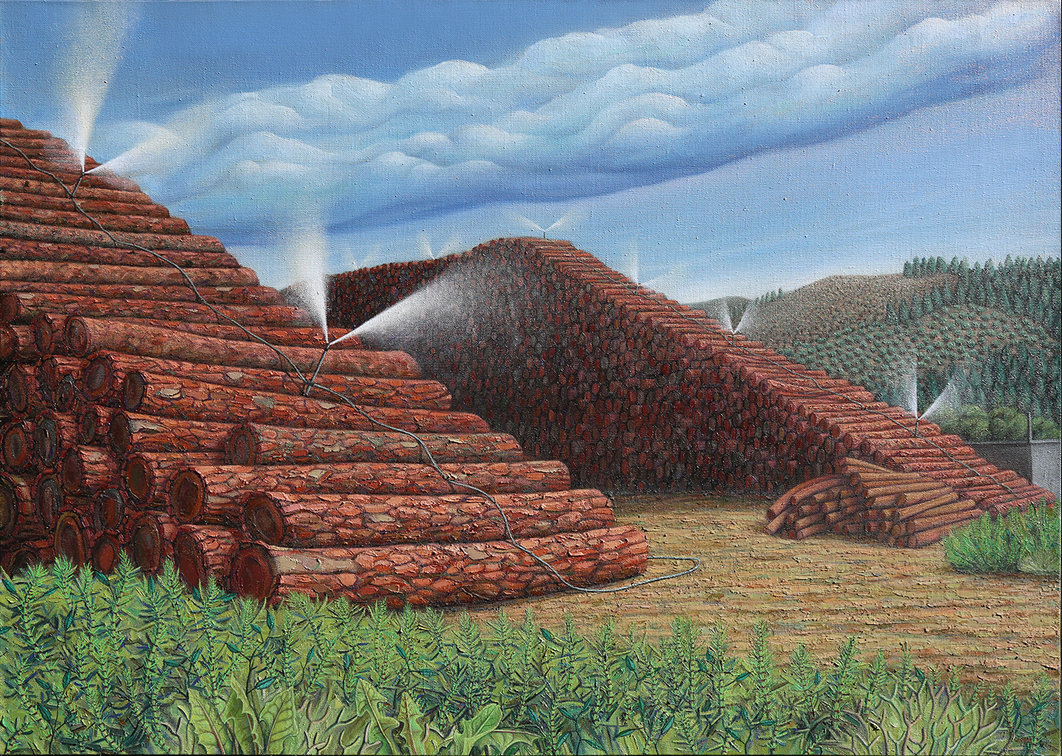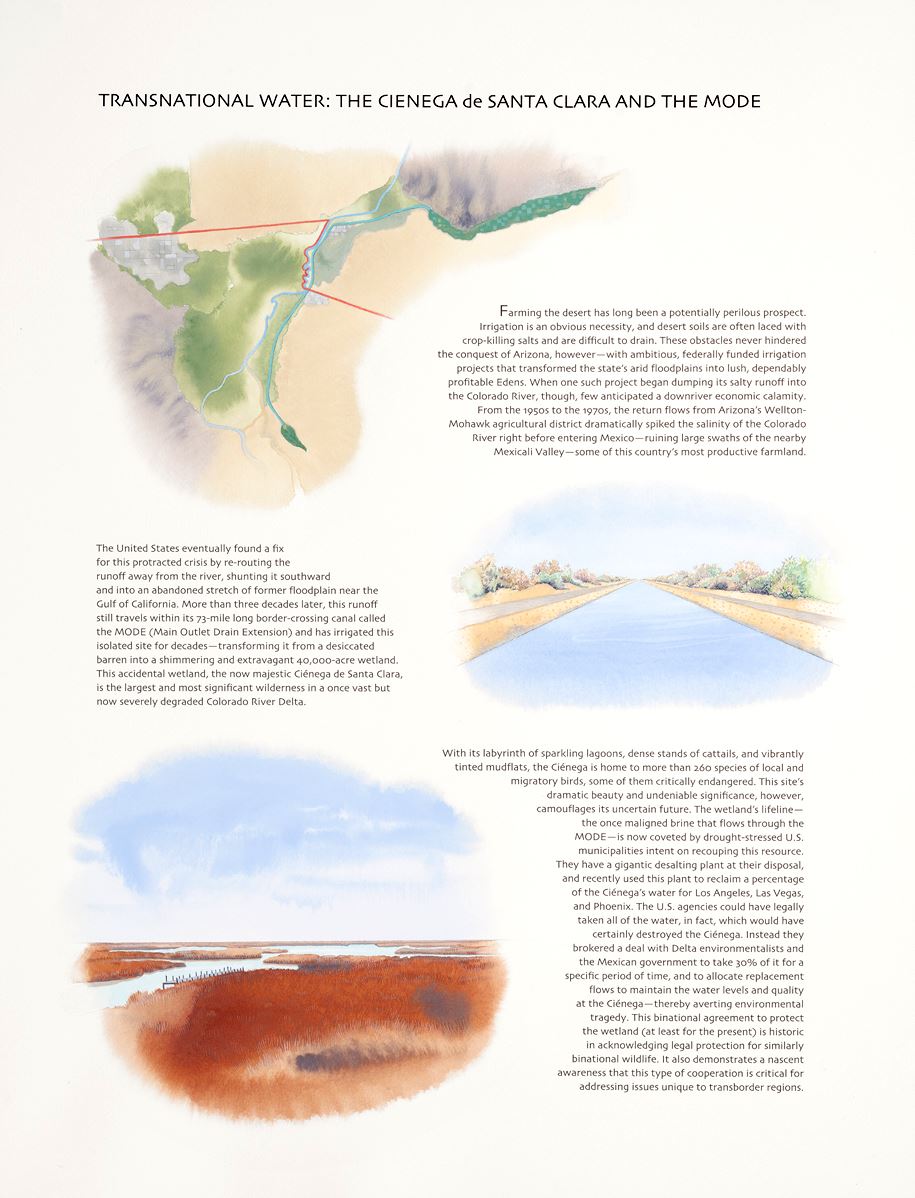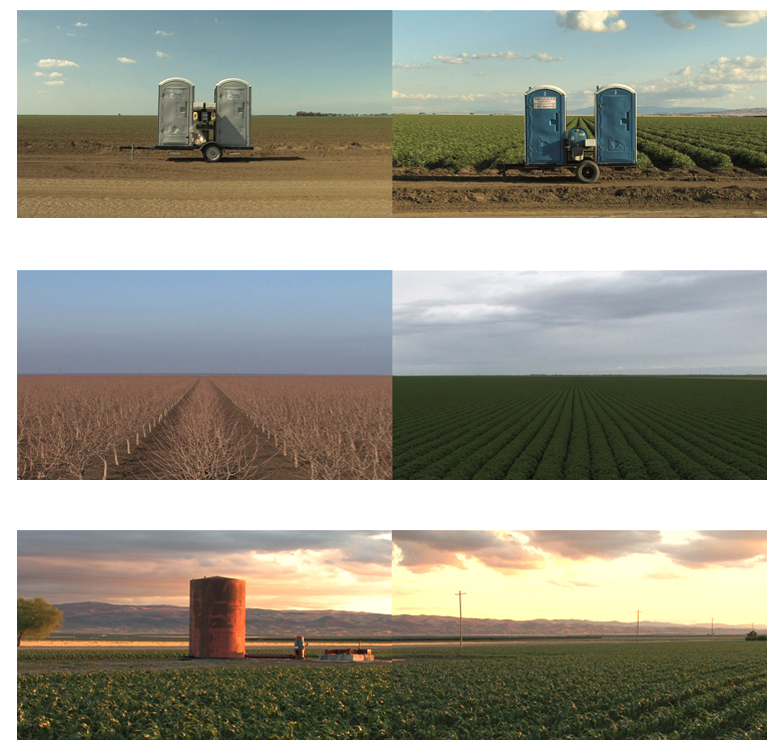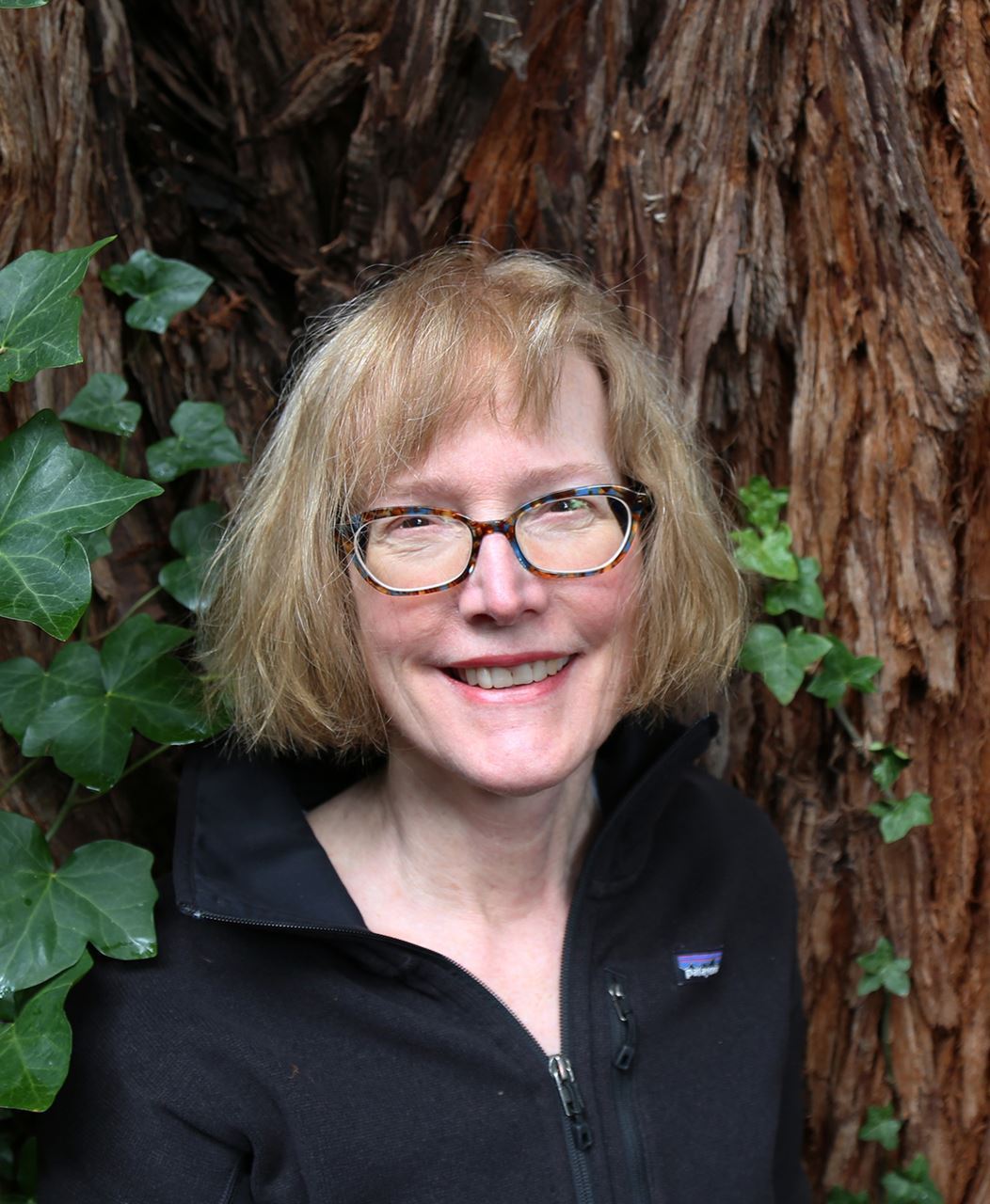
MEMBER SPOTLIGHT
February 20, 2023
This week we recognize Cynthia Hooper Cynthia Hooper, and her twenty plus year practice as a painter and research-based video artist located in Northern California.
Her early paintings (example above) from the mid to late 1990s, document the timber industry and related infrastructure in Humboldt County, California. This region's monumental log decks were once a ubiquitous sight—grand and metaphorical Ziggurats honoring the gods of progress and profit. Because of the depletion of historical timber stock (along with increased regulation and unpredictable cycles of market demand) far fewer of these iconic monuments are still around, though this industry remains regionally and internationally significant.
click images for more info

Transnational Water: The Cienega de Santa Clara and the Mode, featured above, is an example of Hooper's essays/paintings describing anthropogenic wetlands in Mexico's Colorado River Delta and the wetlands' complex relationship with U.S. political and environmental policy. It is one of three panels presented for the exhibition Shifting Baselines, presented at the Santa Fe Art Institute made during the artists' residency and exhibition in 2012.

A Negotiable Utopia: The Humboldt Bay Project, 2015 (above), is an interdisciplinary media project featuring six short observational documentary videos and accompanying essays that examine and interpret the built environment of Humboldt Bay—California's second largest estuary. This project investigates the bay's natural resource economy and infrastructure (including timber, fishing, and aquaculture), its transportation (including roads, rails, and ships), as well as the bay's power infrastructure—including formerly nuclear, fossil fuel, and renewable energy. The project also documents Humboldt Bay's natural and municipal watersheds, as well as its varied conservation zones and complicated shoreline. Each video features atypical and unexpectedly graceful views of the bay, and each accompanying essay includes evidence-based narratives that honor the diversity of perspectives and experiences that index these compelling environments.

Humedales Artificiales: Three Transnational Wetlands, 2012, is the title of a video and essay media publication about the anthropogenic wetlands of the Colorado River Delta in Mexico. In the video (above), Las Arenitas is an anthropogenic site and represents a highly successful and collaborative remedy for two big borderland challenges: wetland restoration and municipal infrastructure improvement. Municipal effluent from the Baja California city of Mexicali meanders through a maze of treatment wetlands that also support thousands of local and migratory birds. After helping the local environment, this repurposed water sometimes makes it way to the Gulf of California, thereby re-connecting the Colorado River by way of the sinks and toilets of 300,000 people.
Westlands, 2011 (below), is a two-channel video installation about The Westlands water district in California's San Joaquin Valley, which is undisputedly the largest and most powerful water district in the nation. This agricultural district's outsized and highly mechanized operations grow billions of pounds of tomatoes, almonds, pistachios, wheat and cotton for the global market each year. Westlands also has the country's highest poverty rate, lowest education levels, intractable pollution and tainted water. The story of this place typifies well-intentioned Federal policy gone awry: subsidies historically devised to foster a sustainable agrarian economy for the many now promote concentrations of power and profit for the few. Despite all these troubling metrics, however, the sweeping panoramas of efficiency and servitude that define this site as a phenomenological experience often complicate predictable assumptions about it. The subtle and grandiose visual metaphors found here possess undeniable political agency, but also a capacious poetry as well.

Cynthia Hooper makes paintings, research-based videos and essays that examine and interpret infrastructural landscapes in the United States and Mexico. Her detailed investigations patiently capture the incidental and emblematic activities that define these complicated places, and advocate for the regional laborers, activists, and researchers who tactically refashion their complex geography. Her generously observational strategies and evidence-based narratives honor the diversity of perspectives that index the sites that she studies. Hooper has worked with Tijuana's complex urban infrastructure, politicized water issues along the U.S./Mexico border, and water, power, industrial and agricultural sites in California, Oregon, Arizona, and Ohio. Recent sites examined include the reconfigured wildlife refuges of California’s Central Valley, the artificial wetlands of Mexico's Colorado River Delta, and the built environment of California's Humboldt Bay. Exhibitions and screenings include the Center for Land Use Interpretation in Los Angeles, the Museum of Modern Art in Mexico City, the Centro Cultural Tijuana, Santa Fe Art Institute, Museo de Arte Carrillo Gil, and MASS MoCA. Published work includes Places Journal and Arid: A Journal of Desert Art, Design and Ecology. Residencies and grants include the Headlands Center for the Arts, Djerassi Resident Artists Program, the Graham Foundation for Advanced Studies in the Fine Arts, and the Gunk Foundation. She lives in Northern California. www.cynthiahooper.com
Featured Images (top to bottom): ©Cynthia Hooper, Eel River Log Deck, 1995, oil on canvas, 30 x 42 inches; Transnational Water, 2011-2012, watercolor and gouache with essays on paper, 18 x 24 inches; A Negotiable Utopia: The Humboldt Bay Project, 2015, videos and essays; Humedales Artificiales: Three Transnational Wetlands, 2012; Westlands, 2011, two-channel video installation, 6.5 minutes running time; portrait of the artist by Jesse Wiedel.
